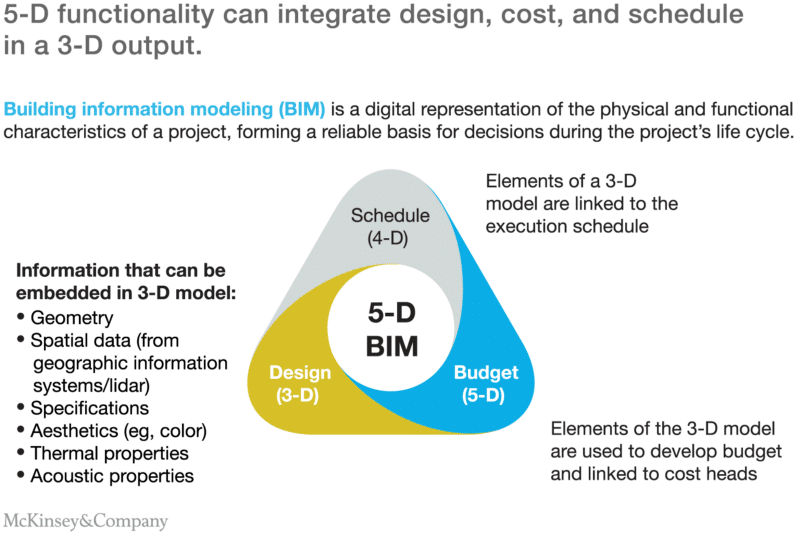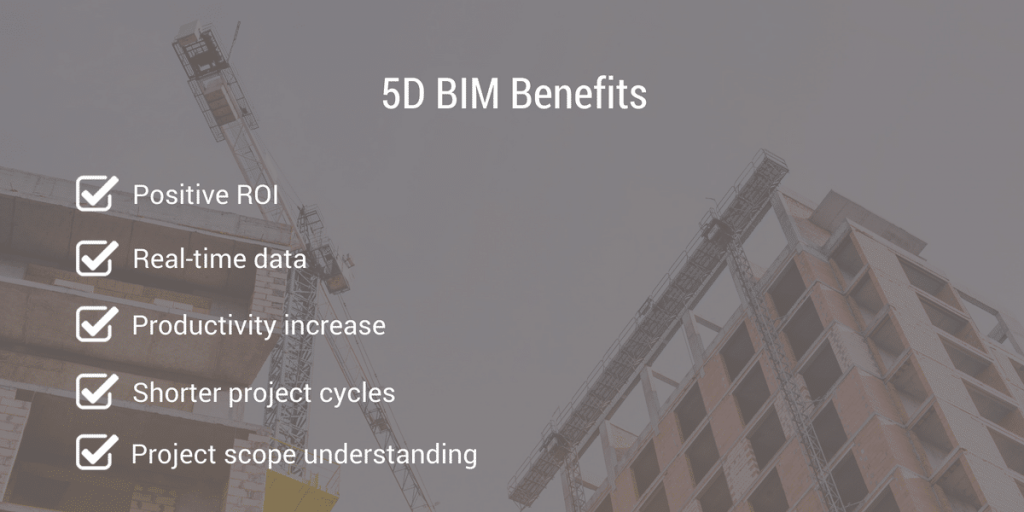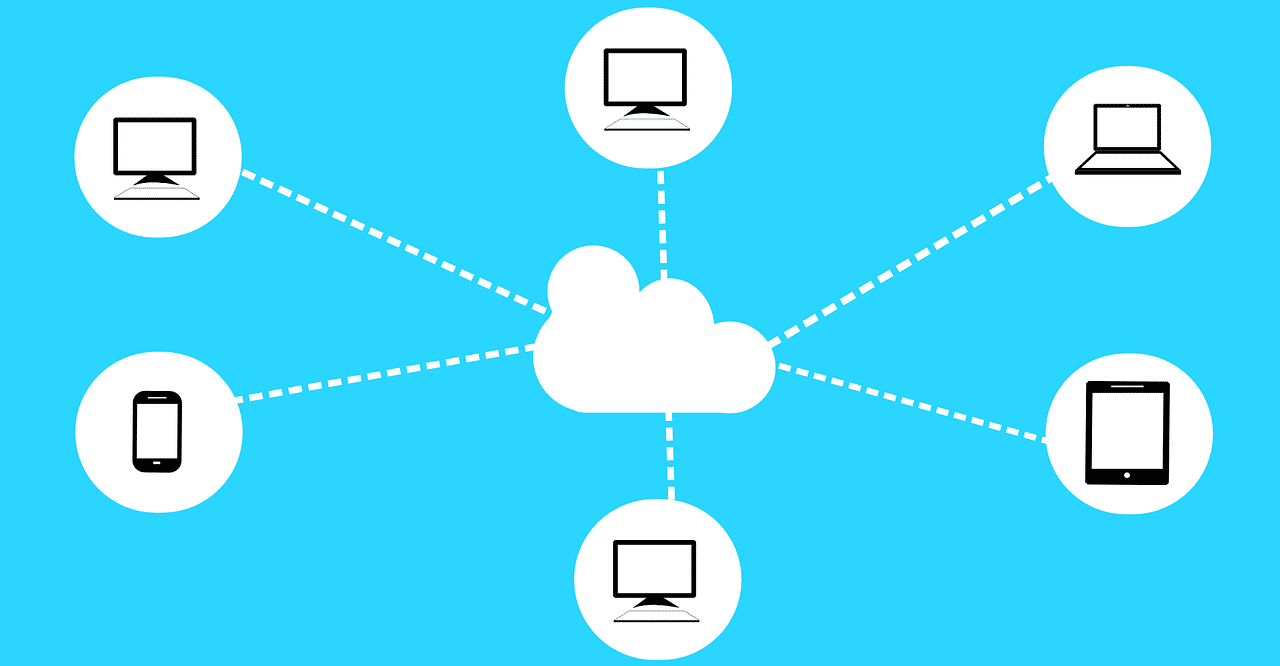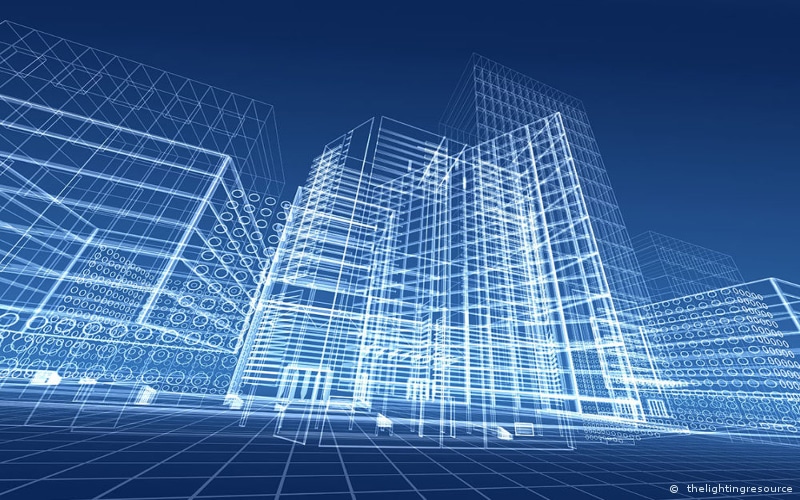What is 5D BIM and how is it used in the construction industry?
Some time ago we explored BIM, Building Information Modeling, and explained what it stands for. We took a deeper look into 5D and the new revelations for this industry changing information sharing system.
![]()
5D is a five-dimensional way of showing the physical & functional aspects of any project. You can find the 5D information sharing in level 2, full collaboration, of the BIM along with 4D. 5D adds the element of costs to the already existing time management and CDE components of information sharing in construction.
Find also: What are BIM objects?
5D allows more people to be involved in the conversation from the onset instead of working in isolation waiting to provide information about their piece of the project when it is time. This technology also allows automatic generation of quantities to be processed quicker, provides more accurate data and allows the estimator to explore new ways of providing efficient designs, performance and costs.
A better way to understand it is if we take that same idea and apply it to brands and social media. When using social media, brands have a way to assist more consumers quicker than in the original phone or email customer service ways, a “generation of quantities to be processed quicker.”
It allows a brand to have a direct voice to the consumer providing “accurate data” or information. Social media also gives an insight into the consumers “likes”, “dislikes”, and opinions on their product in order to provide future “efficient designs, performance and costs.”

- Photo: 5D Functionality via McKinsey&Company
5D aids in all aspects of the construction industry but the ones who get the most benefit of this extra dimension are the project managers. Walter Davis, the Estimating Market Manager for Sage said,
One of the most time-taking and error-prone activities … is literally the process of taking off measurements and quantities from a set of drawings. Generally, this process has involved physical blueprints or, today, digital versions of those blueprints.
Being able to access this information in a 3D model, without manually measuring or counting everything in the project, well, you might imagine that it can … productivity by an order of magnitude.
Davis went on to explain that 5D aids in the decision making of a model for the owners. They have the ability to see the models change from one another. Seeing the impacts the costs make on each model estimate is key to a successful beginning of a project & staying on budget.
5D BIM software: How it can improve construction project management
BIM relies on a Common Data Environment where all different project agents can collaborate and exchange valuable feedback. In that sense, 5D BIM software can have a powerful impact on the construction management process when it comes to cost-related information.
More analytically, thanks to 5D BIM, data connected to cost are continuously updated as the project progresses. This means that cost is dynamically evolved and readjusted instead of solely being defined at the beginning of the project.
That’s a revolutionary approach which makes it easier for the project managers to monitor changes while keeping the project running within the agreed budget. In the long run, this can improve cost predictability and resource management.
On top of that, establishing a good connection between the construction site and the office will prevent teams from working in silos and will pave the way for more fact-based decisions.
Of course, digital adoption plays a decisive role in the successful use of 5D BIM software. Otherwise, the new project data will never make it to the BIM model. Once this barrier is down, everyone can be sure that they are working on the latest and up-to-date project version.
Additional benefits of 5D BIM
By now, it is already clear that 5D BIM can have multiple benefits for the construction process. Here is a more detailed list of them below:
- According to a study, McKinsey&Company have found, 75 percent of companies who have started using this added element to BIM has found a positive return on investment.
- Five-dimensional technology has provided those using it shorter project cycles, savings on time with things like paperwork and even down to material costs. With such successful results, governments in countries like Britain, Finland & Singapore have decided this use of BIM for all public infrastructure projects.
- Visual and data modeling capabilities translate into a better understanding of project scope. Formulas drive costs on each building system based on the specific design, materials, site conditions, phasing and other parameters according to the owner’s timeline.*
- The entire project team develops an understanding of the proposed design, assumptions and cost drivers. They then have a concise and accurate description of scope, cost, and schedule—which directly impacts funding decisions. *
- Data is provided in real time as the model is developed or changed. Alternative concepts can be easily explored; while owner and project team can see the cost and other data unfold instantaneously. This drastically shortens design and estimation cycle time. Reliable, accurate updates in real time drive efficiency. *

Read also: The four pillars of collaboration in construction
- Databases make it possible to leverage not only historical data but also industry experience. Using data from specific sectors—such as healthcare or distribution center construction—is a significant advantage to owners who place a high value on proven success. *
- All major project stakeholders can visualize the end product and understand exactly what’s included in the budget. For owners, transparency is crucial. No surprises. *
- Updating the model automatically changes the construction costs in real-time. “What-if’s” become productive and engaging solution missions for the entire team, especially the owner. *
What does 5D BIM mean for cost managers?
5D BIM can be a game-changer for cost managers, as well. In general, it adds much more flexibility to their work and improves considerably their decision-making process.
Simply put, through 5D BIM, cost managers have full control over a project’s budget as any alteration or update on the design reflects directly on the budget.
Based on the available data, cost managers can quickly reach to price estimations and provide project teams with instant feedback on executing or developing a task, or even an entire stage of a project, within the agreed budget.
Furthermore, by connecting cost to planning there is a more accurate ordering process. Cost managers know with great precision when items are needed on site and they can plan their orders accordingly.
Like that, project teams avoid having materials or equipment sitting unused on site for long periods and they are also in a position to plan ahead and submit orders for long-wait items in advance so they can arrive there at the right time.
The cloud isn’t only used to back up your phone
5D BIM will move into adding a whole new component to the efficiency with the help of Cloud technology. Using a cloud-based environment in construction will make the project accessible to all involved.
Cloud technology is something successfully used in many other industries. Over the past few years, the medical industry has worked on using the cloud to create mobile workforces. Gone are the days of paper charts for doctors & displays for pharmaceutical reps, everyone works off tablets!

Inc. says construction isn’t exactly behind when it comes to the cloud. Construction is soaring in the cloud when it comes to email, sales, marketing, social media & document storage but is struggling to adopt the practice elsewhere. In an Inc. 2016 article, they found that around “30% of construction companies use cloud expense management and messaging apps and only 18% used developer tools.”
Where will 5D & construction technology go in the future?
The cloud is only the start for the use of technology to aid in the project management of construction. Augmented reality is technology that is becoming more popular in society and that means construction is not far behind!
Augmented reality is a “mixed reality” where holographic displays are seen in a device layered on your real life view. This is like virtual reality but instead of a fantasyland, you see what is directly in front of you.
Property / Construction Augmented Reality Demo from Scribble Digital on Vimeo.
Adding AR to a 5D BIM will benefit construction, maintenance & operations. However, in order for it to be successful project owners will need to start the AR & 5-D pairing right from the design stage.
Want To Learn More? The Future Of Construction – BIM
There are also dimensions beyond the fifth that we have to look forward to in the world of BIM! According to Walter Davis, the Estimating Market Manager for Sage. “While not universally agreed upon, 6D and 7D BIM are all about continuing the information linkage between various disciplines in a building’s lifecycle, centered around building operation, maintenance, and energy consumption.”
With technology constantly changing, the software will be able to do so much more than it can today. What do you think the next great technology to aid in construction management is?
Written by Jara Lipman




